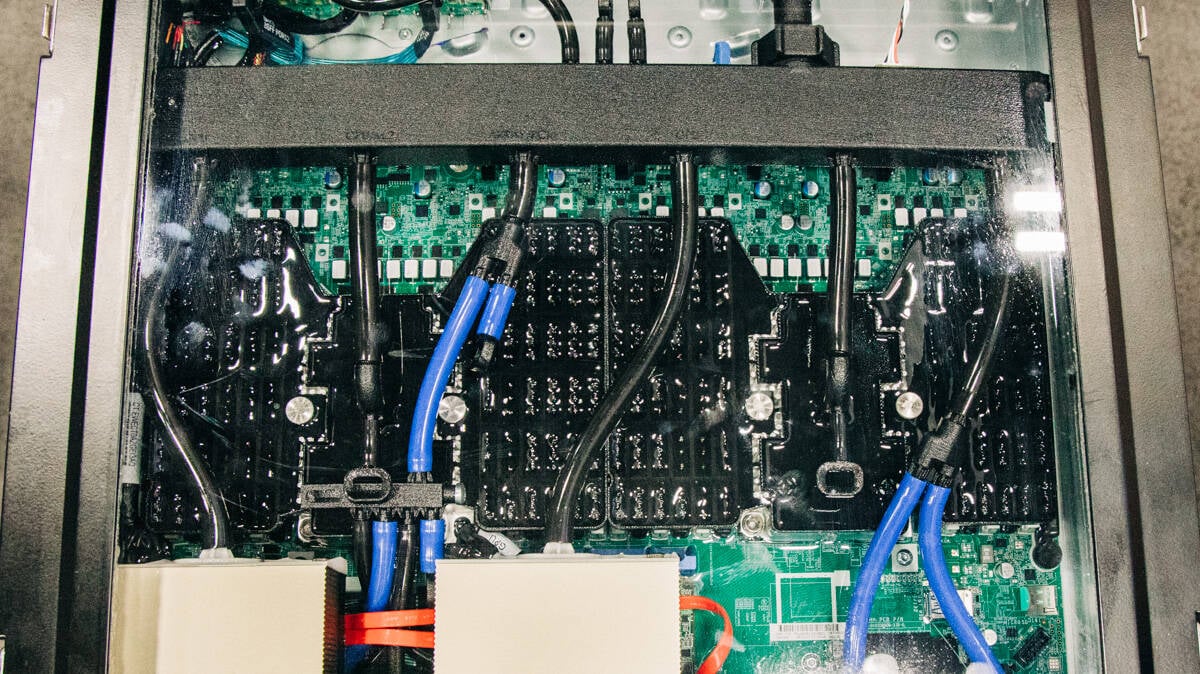Although speakers are critical components in an audio system, many consumers take them for granted. After all, aren’t they just boxes where someone has thrown in two or three speaker drivers and they just work? They might be, if you bought them from someone selling speakers out of the back of their van, but if you want speakers that actually sound good, you need something that not only looks good on the outside but is well-engineered on the inside.
For speakers that include a tweeter and woofer, or tweeter, midrange, and woofer, a crossover is an integral component of the speaker so that the woofer, midrange, and tweeter reproduce the frequencies that they are optimized for.
Crossovers For Audio Defined
The term crossover has two meanings in audio;
- A point where certain frequencies are divided (filtered) so that they are sent to the speaker driver(s) best designed to reproduce the directed frequencies.
- The circuit that actually divides (filters) the frequencies.

Types of Crossover Filters
Crossovers incorporate three types of filters.
- High-Pass Filter (HPF): The frequencies above a designated crossover point are passed through.
- Low-Pass Filter (LPF): The frequencies below a designation crossover point are passed through.
- Band-Pass Filter (BPF): This filter discards frequencies above and below specific points and only passes a band of frequencies in between those points.
Additional Crossover Functions
Cutoff Frequency: This is the point where the HPF, LPF, and BPF(s) frequency point(s) begins. It is important that this point is accurately placed in relation to a speaker driver’s frequency range capabilities.

Slope: This is the rate of frequency drop-off associated with the cutoff frequency. The drop-off can be steep or gradual. The reason that slope is important is that sound needs to blend well so that there isn’t a noticeable abrupt switch between speaker drivers.
Even though there may be two or three speaker drivers assigned to handle specific frequency ranges, the transition between them should be invisible to the listener. This means that there is a narrow frequency range overlap between speaker drivers where they are reproducing the same frequencies as the crossover hands over the designated frequencies from one speaker driver to another within a speaker assembly. This is also important when matching an external subwoofer with the rest of the speakers in a system.

Tip: Sometimes, the crossover setting on a Subwoofer may be labeled Low-Pass.
Types of Crossover Circuits
To perform the filtering task there are two types of crossover circuits:
- Passive Crossover: A Passive Crossover is a combination of resistors, capacitors, and inductors, that are set to divide frequencies at a specific point. No power source is required.
- Active Crossover: An active crossover uses a DSP (Digital Sound Processing) chip or Microprocessor to divide frequencies. A digital crossover accepts a full-range signal and then splits it into the low, mid, and high frequencies using its DSP function. In addition, an active/digital crossover may include adjustability. This option is mainly included in powered speakers, subwoofers, and AV receivers. As such, Active Crossovers require power to work.

Crossovers: Subwoofers and AV Receivers
The Crossover settings in an AV receiver are often referred to as Bass Management settings. Adjustable crossover/bass management settings in subwoofers and AV receivers allow for more precise crossover points when using subwoofers and speakers with different frequency range profiles in a home theater audio system.
Crossovers in 2-Way and 3-Way Speakers
- A two-way speaker incorporates a woofer and a tweeter.
- A 3-way speaker incorporates a woofer, midrange, and tweeter.
In a 2-way speaker, the crossover is set at a specific frequency point. Any frequencies above that point are sent to the tweeter, while the remainder is sent to the woofer.
In a 3-way speaker, a crossover can be designed so that it has two frequency points—one for the point between the woofer and midrange, and another for the point between the mid-range and tweeter.
Tip: The frequency points of the crossover vary depending on the speaker drivers used and the speaker maker.
For example, a 2-way crossover point might be 2kHz. This means that frequencies above that point are channels to the tweeter while frequencies below that point are directed to the woofer.
In a 3-way speaker, there might be a 200Hz point between the woofer and mid-range, and then a 3kHz point between the mid-range and tweeter.
Tip: The above illustrates the basic function and construction of crossovers, but many speaker makers add their own “twist” in the use of construction materials, number of components in the crossover (order), and for electronic crossovers, DSP, and adjustment range.
Related Reading
WTF is a Subwoofer?
WTF is LFE (Low-Frequency Effects)?
Don’t Hookup Your Subwoofer Until You Read This
Basics of Bass: The Strange and Confusing World of “Bass Management”
Receiver and Subwoofer Crossover Setup
WTF is Impedance?










